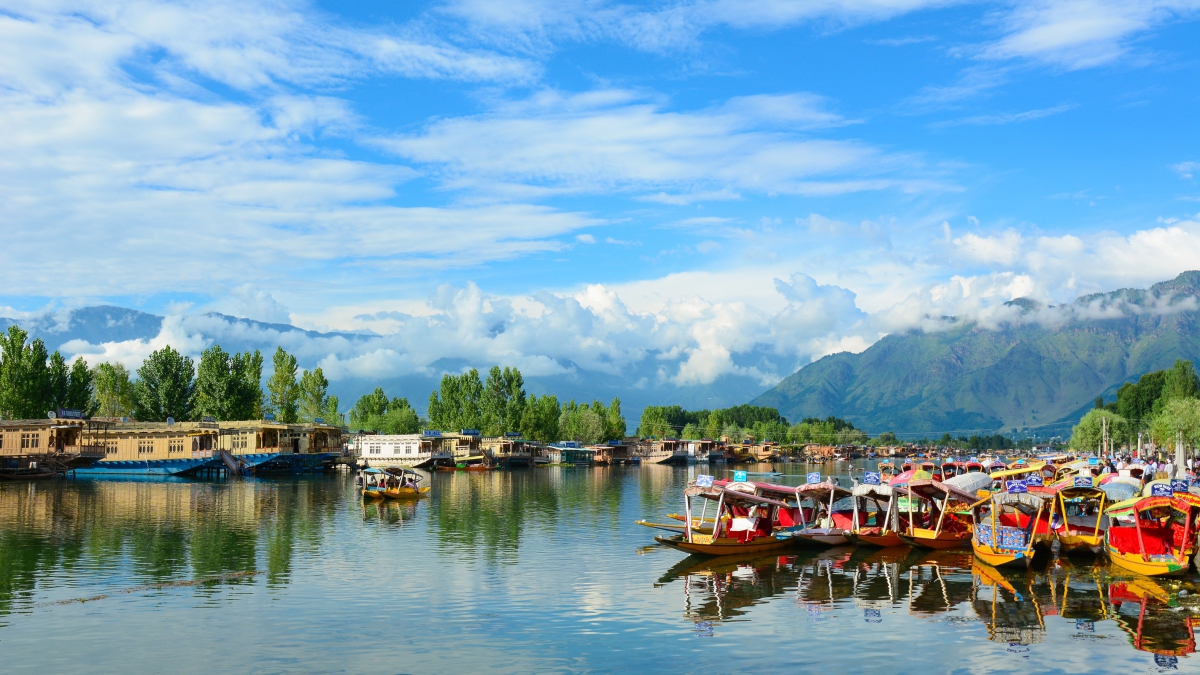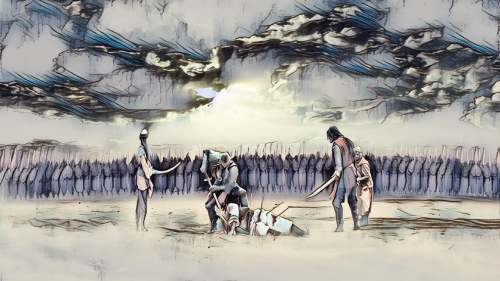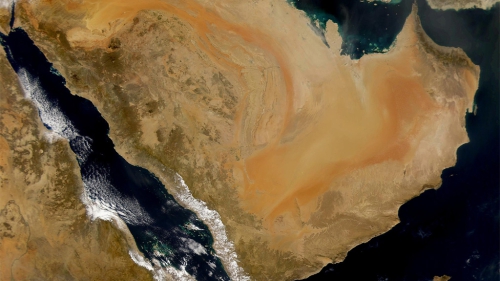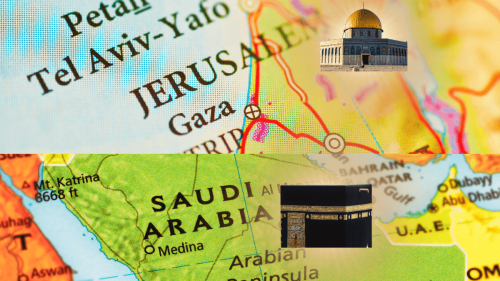The Early History of Islam in Kashmir

The early history of Islam in Kashmir, featuring a Mongol warlord, an Afghan Hindu minister, a Buddhist refugee-turned-king, and a Sufi shaykh from Baghdad.
One cold afternoon in the late 1990s, the daring American-born journalist Eric Margolis witnessed an extraordinary scene: a group of Muslims praying (salah) at a military base on top of the Siachen Glacier, almost 5 km above sea level, at the meeting point of the disputed borders of nuclear-armed India, China, and Pakistan. Of all the diplomatic and military battlefields on which the Indo-Pakistani conflict has been fought, Siachen is undoubtedly the most dreadful for the soldiers dug in on either side of it. [1]
But if Eric’s encounter with some of these men is anything to judge by, they’re willing to stand their ground not only because they are deeply patriotic, but also because they believe they’re defending their religious community’s historic claim to the beautiful mountains and valleys of Kashmir. In other words, for some (though not all) of these men, it’s not just about Pakistan or India; it’s about Muslim or Hindu rule over Kashmir. [2] This attitude may seem irrational, but it is nonetheless genuine and has real consequences.
And that means that it’s important to take a look back into Kashmir’s obscure history and try to identify where such powerful self-perceptions come from. This is a vast history and here I’m going to focus on only one short but important chapter of it: the early history of Islam in Kashmir.
About 300 BCE, Buddhism arrived in Kashmir from further south in India and started to flourish in the region. Before this, Hinduism (of some form) had been the predominant religion in Kashmir for centuries. An important feature of Hinduism, particularly in Kashmir, was the caste system. All Hindus belonged to a certain caste, which you can think of as social class that one belonged to based on the family they were born into. Certain castes were associated with certain skin complexions and occupations; for example, if you belonged to lower caste, chances were that you had darker skin and worked some kind of menial job. The highest caste were the Brahmins, a relatively light-skinned, privileged minority. Because Kashmir is further away from the equator than the rest of India, Kashmiri people are naturally more light-skinned. It didn’t take long for Kashmir, then, to become a symbolic White House of Brahminical rule in northern India.
Buddhism proposed a much less structured and more egalitarian society. This is probably why it spread so quickly in Kashmir once it was introduced there. In the mid-7th century, the famous Chinese Buddhist scholar Hiuen Tsang travelled to Kashmir and found more than one hundred Buddhist temples in the city of Srinagar alone. [3] For almost a thousand years, Kashmir’s ruling Brahmins had tolerated Buddhist efforts to spread their way of life in the region. However, by now Buddhism had become popular enough to be deemed a threat by the Brahmins’ power. The rulers thus started to oppress the Buddhist population, ushering in a period of Kashmir’s history that has been described as a time of Brahminical orthodoxy and revivalism. [4]
In an atmosphere of such intolerance and oppression, many downtrodden lower-caste Hindus as well as Buddhists were ready for any relief that the arrival of a new religion – Islam – might offer them. It is not very surprising that, when the first Muslim dā‘īs (missionaries) arrived in Kashmir, the Kashmiri people “converted to Islam in a flood.” [5] But this relief didn’t come soon, even though Umayyad Muslim forces had reached nearby Afghanistan and Sindh in the early 8th century. Political turmoil in the central Muslim lands (culminating the ‘Abbasid Revolution in 750) meant that neither Islamic conquest nor da’wah(missionary activity) reached Kashmir for a long time yet.
But there was some interaction. In 711, a Syrian Muslim military general, Hamim ibn Sama, came to Kashmir in the company of Jaisiya, the son of the Sindh’s Hindu ruler Raja Dāhir. Dāhir had been defeated by the Umayyad forces of Muhammad ibn Qāsim earlier that year, and Jaisiya had fled to Kashmir, seeking refuge. It is unclear why Hamim went with him; the most likely explanation is that Hamim was taken as a prisoner-of-war.
The ruler of Kashmir at the time was probably Durlabhaka-Pratapaditya II (d. 724) of the Karkota dynasty; and though his seat of power was in Kashmir, he ruled over a much larger empire. Kabul and Gandhar (the Peshawar-Jalalabad region) had been under his rule before they were lost to the Muslim conquest. This seems to have had an impression on him, and it’s possible that he treated Hamim ibn Sama so well in an effort to establish good relations with the Umayyads. Hamim was warmly welcomed at his court and given a large plot of land, where he built Kashmir’s first mosques. [6]
There are other references to interactions between mostly-Hindu Kashmiri people and their Muslim neighbours in Central Asia. About a century after Hamim’s story, another Hindu king of Kashmir’s Karkota dynasty sent a letter to ‘Abd Allah ibn Umar ibn ‘Abd al-Azīz of Mansura, asking him to send a knowledgeable Muslim to Kashmir to explain Islamic law in the local language. Also in the 9th century, a Persian Muslim traveler, Buzurg ibn Shahryar, recorded in his travelogue Ajā’ib al-Hind (The Wonders of India) that the Hindu king in Kashmir had ordered for the Qur’an to be translated into the Kashmiri language. By the 12th century, we find mention of Muslims serving in the royal court and army of the Kashmiri Hindu king Harshadeva. [7]
Thus, the story of Muslims in Kashmir in this early period remains vague. On one hand, there is some evidence to suggest that Muslims were influential even in the Brahminical royal courts and that many lower-caste Hindus and Buddhists embraced Islam. On the other hand, however, there is isn’t much evidence of the steady growth of the Muslim community in Kashmir. In fact, it is only in the late-13th and early-14th centuries that we even find the first recorded Muslim dā’ī in Kashmir: a Sufi named Sayyid Sharf ad-Dīn ‘Abd ar-Rahmān, but remembered as Hazrat Bulbul Shah.
He’s said to have received this nickname because he was such an āshiq-e sunnat-e-rasūl (lover of the Prophet (s)’s example) that he became known as Bilāl (r), after the very close sahābi (companion) of the Prophet (s). The name Bilāl was later corrupted into Bulbul. It is unclear where he came from. According to some sources, he was from Turkistan, but according to others he was from Iran or even Baghdad. As his title (sayyid) suggests, his family claimed direct descent from the Prophet (s) and were known for their piety. He studied in Baghdad and then traveled widely, first through Central Asia and then to Kashmir, where he arrived in 1295, during the reign of the last Hindu king of Kashmir, Raja Suha Dev. After a brief stay in Kashmir, he left, but returned almost 30 years later, this time possibly with some of his disciples. [8]
At the time of Bulbul Shah’s first visit, the Brahmins’ rule over Kashmir was seriously in trouble. By the time he came back, it had completely collapsed, for the first time in history. Jonaraja, a 15th-century Hindu historian, wrote that Raja Suha Dev was “a demon of a king” who “devoured Kashmir for nineteen years, three months and twenty-five days.” [9] During his reign, Raja Suha Dev had given refuge and some land to Lha-chen-rygal-bu-rin-chen (don’t worry, it gets shorter), the son of the Buddhist king of nearby Ladakh, after Lha’s father had been killed in a battle. Meanwhile, Shah Mīr, a Hindu Rajput from modern-day Afghanistan, had also arrived in Kashmir for unknown reasons. He may have been seeking a better job; he served in the administration of Raja Suha Dev. Lha and Shah Mīr, one a Buddhist and the other a Hindu, were to play key roles in the impending rise of Muslim rule in Kashmir.
But they weren’t the ones to jump-start that process. In 1319, the Mongol warlord Zulchu invaded Kashmir and spent eight long months making a bloody mess in Kashmir. He massacred thousands of Kashmiri men, enslaved the women and children, and razed entire towns to the ground. Zulchu was, after all, a direct descendent of Genghis Khan and the grandson of Hulugu Khan, who in 1258 had similarly destroyed Baghdad and brought the ‘Abbāsid Empire to an end. As this devastation unfolded, Raja Suha Dev packed up and fled to Kishtwar, leaving his military commander-in-chief, Rawanchandra, in charge. This proved to be a fatal mistake, as Raja Suha Dev lost all respect and legitimacy in the eyes of his subjects. Many Kashmiris fought valiantly against the Mongols, including Lha and Shah Mīr. Once the Mongols eventually retreated and the smoke cleared, Lha emerged as a leader with strong public support in Kashmir.
Lha recognized that he was in a position to take control, and in 1320 he deposed Rawanchandra and became the first Buddhist king of Kashmir after centuries of Brahmin rule. He then made his comrade Shah Mīr his chief minister. Shah Mīr was a Hindu, but during Raja Suha Dev’s time he would often disguise himself as a Muslim in the evening and sit inside a small inn in Srinagar that served as the local mosque. There he would listen to the lectures by Muslim preachers, and gradually he began to become more and more interested in Islam. On one occasion a Sufi dervish from Kabul visited Srinagar and delivered a lecture that really moved Shah Mīr. The chief minister converted to Islam right then and there, even telling this dervish that he was willing to give up his post in the royal court if he had to for the sake of Islam.
The Sufi dervish encouraged Shah Mīr to reveal his new faith to Raja Suha Dev. Shah Mīr was convinced that he would lose his job as soon as he did so, but he went ahead and did it anyway. To his surprise, neither the Raja nor his advisors at the royal court thought Shah Mīr’s Islam would affect his dedication and excellence as an administrator. Later on, Lha recognized the same qualities in Shah Mīr, which is why he appointed him as his chief minister. It is likely that Shah Mīr was the first Muslim who Lha knew so personally. [10]
Lha has been described by historians as an “inquisitive and alert” young man, “fond of the company of learned men.” He would spend hours with Buddhist and Hindu priests discussing religious matters, but he rarely found their opinions satisfying. Though he was a Buddhist, he felt that Buddhism had been polluted by foreign influences; he disliked Hinduism for the discriminatory caste system and for the Brahmins’ arrogance. He apparently did a lot of soul-searching in the early part of his rule, spending sleepless nights praying for guidance and weeping profusely. At the same time, he was deeply troubled by the constant infighting between his Hindu and Buddhist subjects.
A sudden encounter proved to be a transformational experience both for him and his kingdom. As the story goes, one morning he looked out of a window in his palace and saw Bulbul Shah performing the fajr (dawn) prayer on the banks of the river Jhelum. He went out to meet this man and eventually started to learn about Islam from him. He was so impressed by the teachings of Islam, “which were simple, free from useless ceremonies, caste and priesthood” that in 1323 he accepted Islam and changed his name to Malik Sadr ad-Din (history records him more often as Lha or Rinchen Shah, after his original Buddhist name). The first-ever Buddhist ruler of Kashmir now became the first-ever Muslim ruler of Kashmir. As an anonymous Persian text on the history of Kashmir later put it, Malik (Lha) “now subjected himself to the teachings of the religion of Mustafa [the Prophet (s)], and the right principles of the truthful path of Murtaza [‘Alī (r)], and embraced the Islamic religion with sincerity and conviction.” [11]
Malik’s family converted to Islam after him, and many other Kashmiri leaders, notably Rawanchandra, soon followed. More low-caste Hindus and Buddhists started to embrace Islam during this time as well, convinced that it would free them of the remaining shackles of the Brahminical system. It is said that Bulbul Shah was thus ultimately responsible for the conversion of 10,000 Kashmiris to Islam, though this figure is almost certainly a wild exaggeration. Nevertheless, the impact he had on the history of Islam in Kashmir is undeniable.
Bulbul Shah found a home on the banks of the river Jhelum and spent the rest of his life in Kashmir. Malik (Lha) set up for him a khanqah (a Sufi centre where Sufi shuyūkh and their students could retreat for traditional education) in the heart of Srinagar, and also built two mosques nearby. From this khanqah, Bulbul Shah delivered lectures for many years, and many of his students played a role in spreading Islam further in Kashmir and beyond. Malik also established a langar khāna (community kitchen) where the poor were fed for free, twice a day. Malik’s rule, however, does not seem to have lasted very long, as he faced a rebellion and died within a year of embracing Islam. In 1327, Bulbul Shah passed away as well, and was buried in Srinagar, where his shrine is still visited today. [12] But before he passed away, Bulbul Shah made one of his outstanding disciples, Mullah Ahmad, responsible for continuing da’wah activity in Kashmir. Ahmad was soon to become Kashmir’s first Islamic scholar.
After several years of political struggle, Malik’s chief minister, Shah Mīr, came to power in 1339, rebranding himself as Sultan Shams ad-Dīn. He consolidated Muslim rule in Kashmir; part of this involved appointing Mullah Ahmad as the shaykh al-Islam (i.e. chief religious authority) of Kashmir. Ahmad wrote many works, including the Fatawa-i-Shihabiya, a compendium on Islamic jurisprudence (fiqh) and the other, the al-Shahab al-Shaqab, a treatise on Sufism.
Shams ad-Dīn’s descendants (the Shah Mīri or Swati dynasty) ruled Kashmir until the mid-16th century. It was during their reign that Mir Sayyid Ali ibn Shahab ad-Din Hamdani, a famous Sufi shaykh of Persian origin, came to Kashmir not only as another famous dā’ī but also as a social reformer, and left behind the legacy, along with his students, of initiating the second wave of the spread of Islam in Kashmir and of having a lasting influence on Kashmiri Muslim culture. Significantly, it was during this time that Farsi replaced Sanskrit as the official language of Kashmir. After the Shah Mīri dynasty, Kashmir was conquered first by the Mughal Empire and then the Durrani Empire. Altogether, Muslim rule over Kashmir lasted for five centuries (1323-1819).
Sources:
- Eric Margolis, War at the Top of the World: The Clash for Mastery of Asia, (Toronto: Key Porter Books, 1999), pp. 152-153.
- Margolis, War at the Top of the World, p. 153.
- Bashir Akhtar, ‘Ibadat Gahen’ (‘Places of Worship’), in Hamara Adab (Our Culture), Srinagar: Jammu and Kashmir Academy of Art, Culture and Languages, 1981–1982, p. 181.
- Yoginder Sikand, “Hazrat Bulbul Shah: The First Known Muslim Missionary in Kashmir,” Journal of Muslim Minority Affairs 20, no. 4 (2000): p. 362.
- Rashid Nazki, ‘Mazahib-o-Aqa’id’ (‘Religions and Beliefs’), in Hamara Adab(Our Culture), 1981–1982, p. 172.
- Sayyed Muhammad Faruq Bukhari, Kashmir main Islam: Manzar Aur Pasmanzar (Islam in Kashmir: Historical Context), (Srinagar: Maktaba ‘Ilm-o-Adab, 1998), p. 18.
- Sikand, cit., p. 363.
- Sikand, cit., p. 364.
- M. D. Sufi, Kashir: Being a History of Kashmir from the Earliest Times to Our Own, Vol. I, (New Delhi: Capital Publishing House, 1996), p. 117.
- Mohibbul Hasan, Kashmir Under the Sultans, (Srinagar: Ali Mohammad, 1974), p. 39.
- Baharistan-i-Shahi (The Royal Garden), (Calcutta: Firma KLM), p. 22.
- Gowhar Geelani, “Kashmir: The Alcove of Sufis and Saints,” Dawn News, July 18, 2013, accessed December 31, 2015.
( This article was written by Hassam Munir and published in iHistory )

















